
Get grounded in what makes a business worth building—and worth leading.
Every business that endures is built on more than hustle—it’s built on clarity, discipline, and timeless fundamentals. In this opening chapter, we focus on what truly matters in the early stages: solving real problems, staying curious, questioning your assumptions, and building something that actually works. These Rules remind us that the foundation isn’t just where you start—it’s what you return to every time things get shaky. Whether you’re launching, rebuilding, or leading through change, this is where the work begins.
CHAPTER 1, Foundations First features these 5 rules:
- WEEK 1— Rule No. 1: Solve a real problem.
- WEEK 2— Rule No. 2: Fall in love with the problem, not the solution.
- WEEK 3— Rule No. 6: Your first idea is rarely your best.
- WEEK 4— Rule No. 10: Never stop learning.
- WEEK 5— Rule No. 15: Work on the business, not just in it.
Ask yourself: “Am I building on clarity—or just momentum?”
If you’re charging ahead without a clear problem to solve, clinging to your first idea, stuck in the day-to-day, or not actively learning, it’s time to slow down and shore up your foundation. This chapter isn’t just for startups—it’s for anyone who wants to lead with purpose, not just push for progress.
Week 1
Rule No.1: Solve a real problem.
Why: Because, without a problem worth solving, everything else is wasted effort.
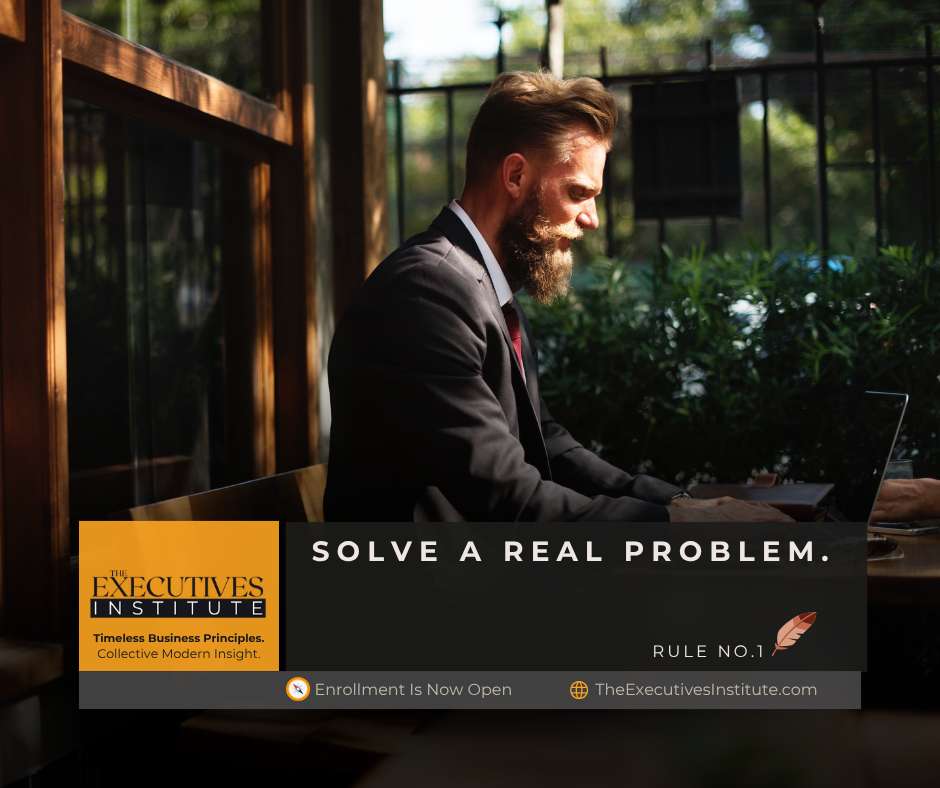
Rule No. 1 SUMMARY ![]()
If your product, service or strategy isn’t solving a real problem for a real person, it’s a vanity project – not a business.
Painkillers outperform vitamins every time.
Ask Yourself: What problem does our business truly solve—and would our customers describe it the same way?
WEEK 1 Action Step —
Interview three existing or potential customers to uncover a problem they’re actively trying to solve. Document exactly how they describe it in their own words.
Now, write down your core problem statement—not in your words, but in your customer’s words.
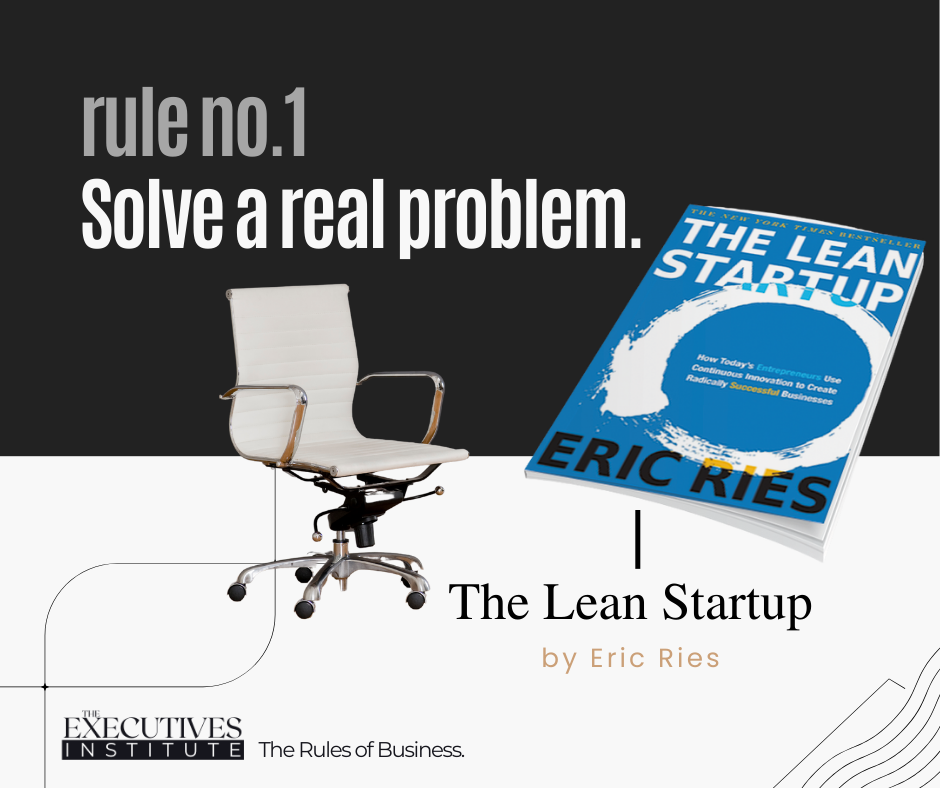
WEEK 1 Recommended Reading: The Lean Startup by Eric Ries
“The question is not ‘Can this product be built?’ Instead, it is ‘Should this product be built?’”
— Eric Ries, The Lean Startup
Week 2
Rule No. 2: Fall in love with the problem, not the solution.
Why: Because, this keeps you customer-centered, not ego-driven.

Rule No. 2 SUMMARY ![]()
Solutions come and go, but a deep understanding of the real problem creates lasting value. Focus on the true needs and challenges of your customers—not your preconceived ideas.
Ask Yourself: Are you defending your solution…or solving the customer’s real need?
When was the last time you deeply re-examined your customers’ pain points without trying to sell them your solution?
WEEK 2 Action Step —
Commit to having two customer or prospect conversations. Don’t pitch—just ask questions. Then, list three ways your current solution could fail, and rethink from the problem backward.
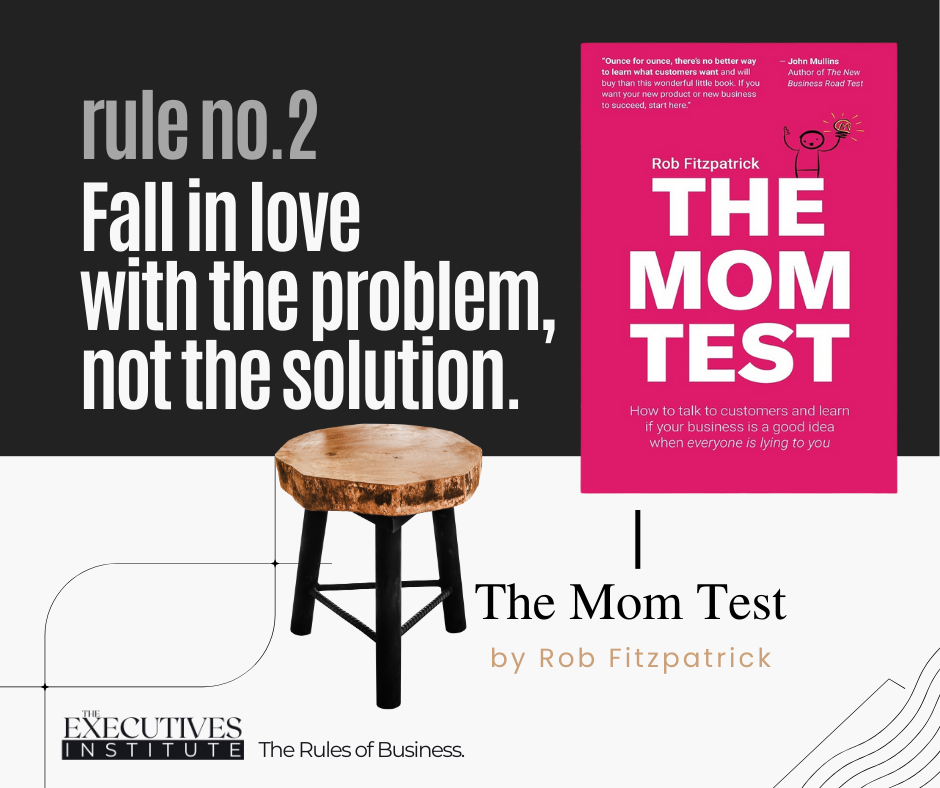
WEEK 2 RECOMMENDED READING: The Mom Test by Rob Fitzpatrick
“You’re not allowed to tell them what their problem is. They have to tell you.”
— Rob Fitzpatrick, The Mom Test
Week 3
Rule No. 6: Your first idea is rarely your best.
Why: Because, this forces humility and iteration.

Rule No. 6 SUMMARY ![]()
Great ideas emerge after rethinking and refining initial concepts, proving that persistence and revision often lead to better solutions. The most original thinkers don’t settle for their first solution—they generate many. Great ideas often emerge later in the creative process, after initial concepts have been tested, challenged, or discarded. Quantity breeds quality when you’re willing to rethink, revise, and persist beyond what’s obvious.
Ask Yourself: If you couldn’t use your current approach, what would you do instead?
WEEK 3 Action Step—
Come up with three new variations on a current project before finalizing your plan.
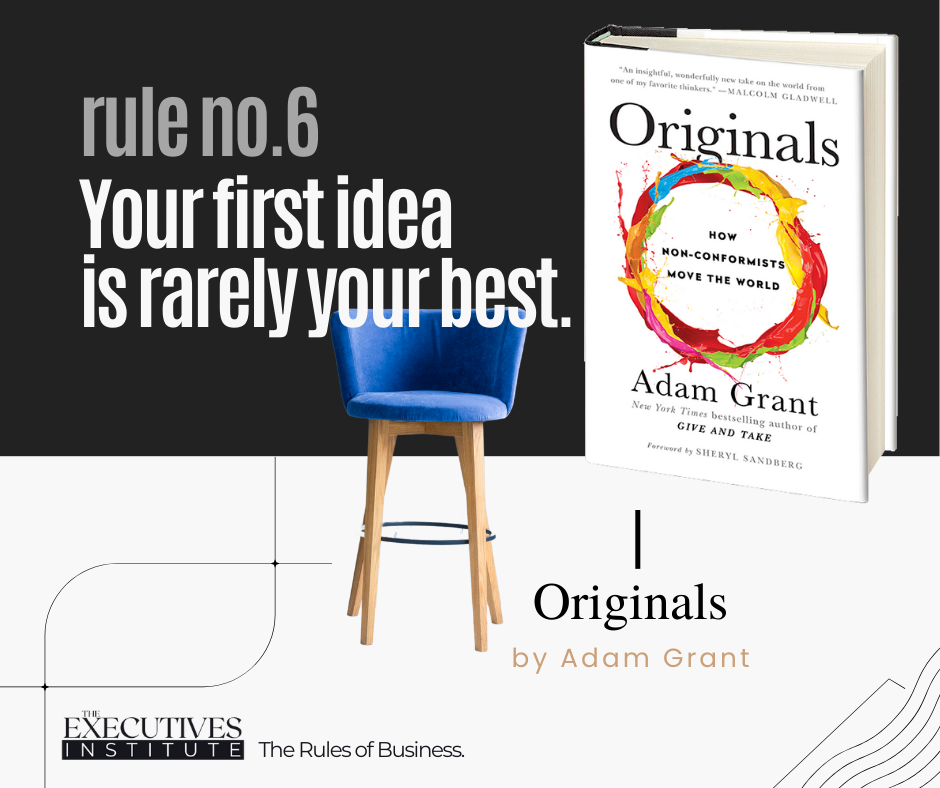
WEEK 3 RECOMMENDED READING: Originals by Adam Grant
“The greatest originals are the ones who fail the most, because they’re the ones who try the most.”
— Adam Grant, Originals
Week 4
Rule No. 10: Never stop learning.
Why: Because, growth mindset fuels reinvention.

Rule No. 10 SUMMARY ![]()
A growth-minded leader embraces learning as a lifelong process—not a phase to graduate from. Whether you’re in the boardroom or the breakroom, staying open to new ideas, skills, and feedback separates those who evolve from those who become irrelevant.
Ask Yourself: Where am I relying on what I already know instead of seeking what I need to learn to grow myself and my business?
WEEK 4 Action Step—
Identify one skill, concept, or perspective outside your current expertise that could materially improve your business or leadership impact. Schedule 60 minutes this week to actively explore it—through reading, a podcast, a course, or a conversation with someone knowledgeable—and capture one actionable insight you can apply immediately.
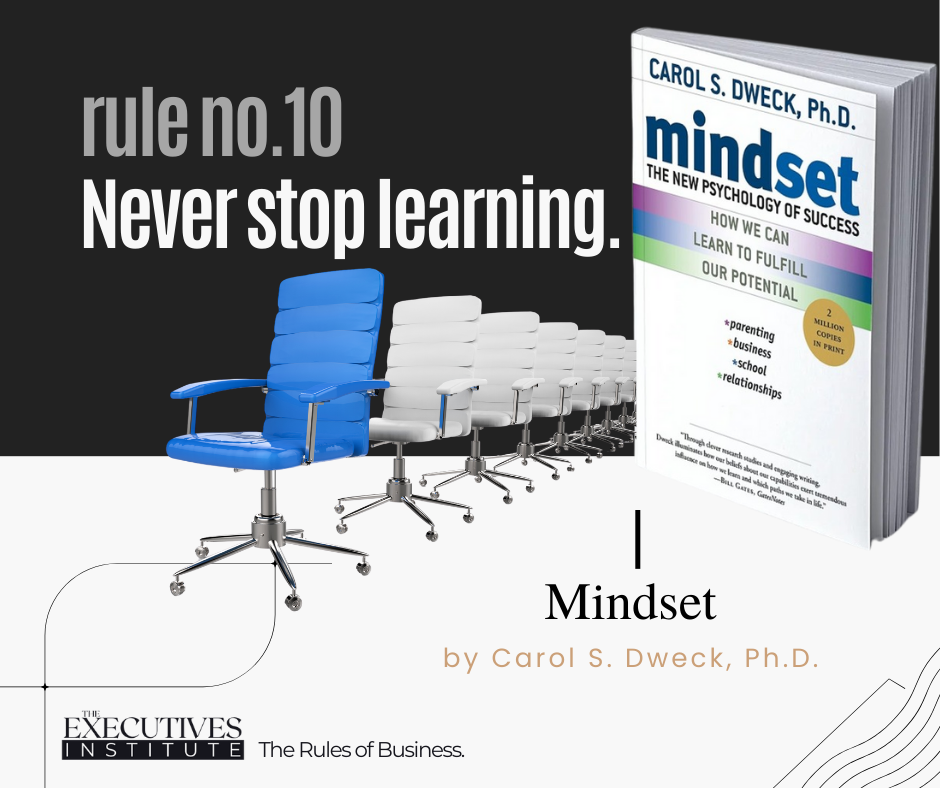
WEEK 4 RECOMMENDED READING: Mindset by Carol Dweck
“Becoming is better than being.”
— Carol S. Dweck, Mindset
Week 5
Rule No. 15: Work on the business, not just in it.
Why: Build systems, not a self-employed prison.

Rule No. 15 SUMMARY ![]()
Successful businesses aren’t built by overworked operators—they’re built by owners who step back, see the big picture, and design systems that scale. This rule is a wake-up call: if you’re stuck doing all the work yourself, you’re not building a business—you’ve just bought yourself a job. Working on the business means shifting from technician to architect, from doing the tasks to designing the machine that gets them done.
Ask Yourself: What’s the one improvement that would make your work easier next month?
WEEK 5 Action Step —
Block two hours this week for strategic planning, not daily operations.
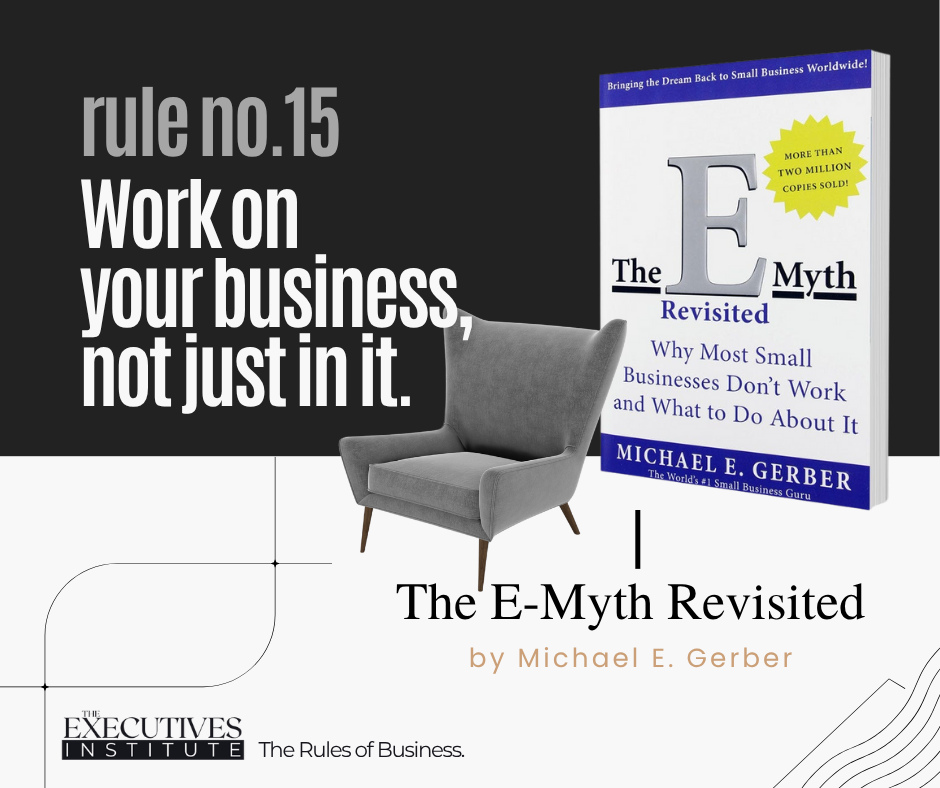
WEEK 5 RECOMMENDED READING: The E-Myth Revisited by Michael Gerber
“The problem is not that people fail to work hard enough. The problem is that they work hard at the wrong things.”
— Michael Gerber, The E-Myth Revisited
Congratulations—you’ve laid the groundwork. By studying these first five Rules, you’ve done more than just begin—you’ve made a commitment to build something that lasts. Foundations aren’t flashy, but they are everything. The strongest companies, teams, and leaders return to these principles often, especially when the path gets unclear.
When you’re ready, Chapter 2 is waiting. In it, we shift from groundwork to momentum—taking what you’ve built and turning it into traction. We’ll cover the Rules that drive action, consistency, and early growth—the habits that separate those who stall from those who scale. VISIT Chapter 2
